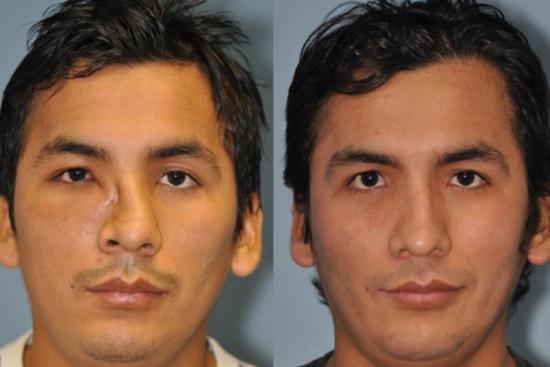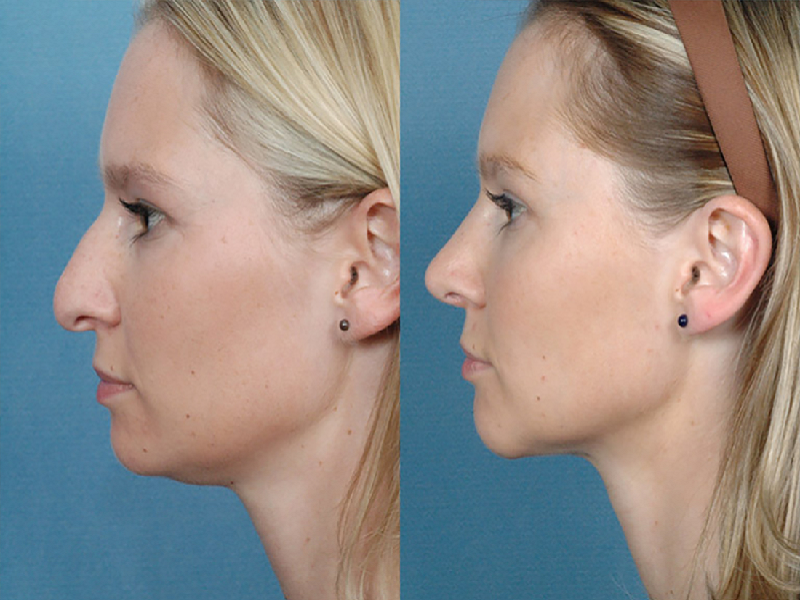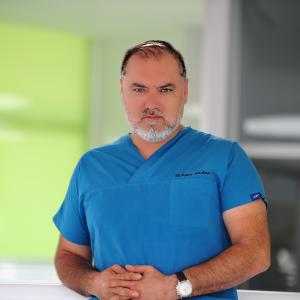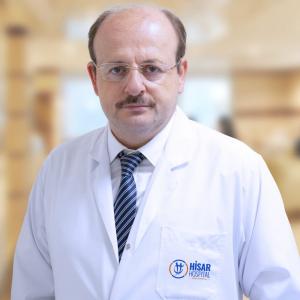Septorhinoplasty is the operation of rhinoplasty combined with septoplasty. Rhinoplasty is a cosmetic nose reshaping procedure performed to meet the needs of those who are unhappy with the shape and appearance of their nose. Septoplasty, on the other hand, is surgery, for exclusively therapeutic purposes, to correct the condition of a deviated nasal septum.
We're Here to Help.
People who suffer from the functional or aesthetic consequences of a deviated nasal septum
- Hemorrhages
- Infections
- Adverse reactions to anesthesia
- Persistence of deviated nasal septum
- Undesirable change in the shape of the nose
- Septal perforation (opening of a harmful nature, at the level of the nasal septum)
- Reduced sense of smell
- Nasal septal hematoma
- Temporary numbness of the gums and upper dental arch
Between 30 min and 1 h 30
- Full recovery takes 3-6 months
- In the most severe cases, this could happen after 12 months
What is a septorhinoplasty?
Septorhinoplasty, also called rhinoseptoplasty, is a surgical operation that consists of straightening the nasal septum and eliminating its deviations, for therapeutic and aesthetic purposes.
Its purpose is to correct deviations and malformations of the nasal septum to improve its functioning and facilitate breathing, but it can also correct certain imperfections of the nose. It is in this dual function that it differs from simple rhinoplasty (which only deals with improving the aesthetics of the nose) and septoplasty (which only corrects the nasal septum for medical purposes). The best results are obtained if the remodeling to be performed is light.
Why is this done?
As for the therapeutic indications of septorhinoplasty, they are related to the disorders caused by the deviation of the nasal septum. Some examples are:
- Breathing problems due to a deviated septum creating obstructions
- Sleep problems
- Dry mouth (xerostomia),caused by breathing with your mouth open
- Runny noses (or epistaxis),which are frequent episodes of nosebleeds
Aesthetic indications, on the other hand, can be all kinds of imperfections in the shape of the nose.
Progress of the operation in Turkey
Before starting a septorhinoplasty in Istanbul, Turkey, the patient undergoes local or general anesthesia.
As with septoplasty, the surgeon cuts the nose at the septum. If the necessary remodeling is simple to perform, the specialist can reposition the septum without removing it first. Otherwise, he will have to remove it, straighten it, and then reposition it inside the nose. The surgeon then places sutures on the nose.
Recovery after septorhinoplasty
The operation involves one day of convalescence in the hospital, but full recovery can take up to several months (from three months to a year in some cases). It is common to have nosebleeds in the week following the operation.
It is important to continue not to smoke and to avoid blood thinners and aggregates for approximately two weeks after surgery, as well as to refrain from strenuous physical activity, keep your head elevated while you sleep, and do not blow your nose for a while.
After about a week after the rhinoseptoplasty, you can return to work, but it is still necessary to undergo periodic medical monitoring.
Postoperative phase
At the end of the septorhinoplasty, hospitalization is to be expected.
Hospitalization ends when the effects of anesthesia wear off. Generally, if the anesthesia was of a local type, the discharge takes place the same day of the operation; if, on the contrary, the anesthesia was of a general type, the discharge takes place the day after the operation.
Throughout the hospitalization, the medical staff keeps the patient under observation, subjecting him to periodic checks of the vital parameters.
Post-operative feelings
After rhinoseptoplasty, it is quite common for the patient to experience pain in the nose and suffer from bleeding or vomiting with blood.
Often, for pain, doctors recommend painkillers like acetaminophen.
Post-operative indications
Some common post-rhinoseptoplasty indications are:
- Use decongestant eye drops.
- Antibiotic therapy for 5 days.
- Rest and refrain from heavy activities until otherwise indicated by the attending physician. It serves to reduce the risk of bleeding.
- Don't blow your nose under any circumstances.
- Keep your head up while you sleep.
- Use comfortable clothes with front buttoning. Avoid clothes that slip off the neck.
Septorhinoplasty in Istanbul, Turkey: Price of the best clinics
The price of a septorhinoplasty operation varies from case to case, as each patient has different problems. In addition, the costs of septorhinoplasty present strong fluctuations linked not only to the experience and competence of the operating surgeon, but also to other variables linked to the structure where the intervention is performed, and of course to the level of professionalism (surgeon and anesthetist assistant) of the team.
Therefore, the price of nose surgery should be assessed by considering various factors.
With Turquie Santé, you benefit from advantageous prices for the realization of your septorhinoplasty under the directive of the most experienced surgeons and in the best clinics in Istanbul, Antalya, Izmir, and Bursa in Turkey.
Share this page












